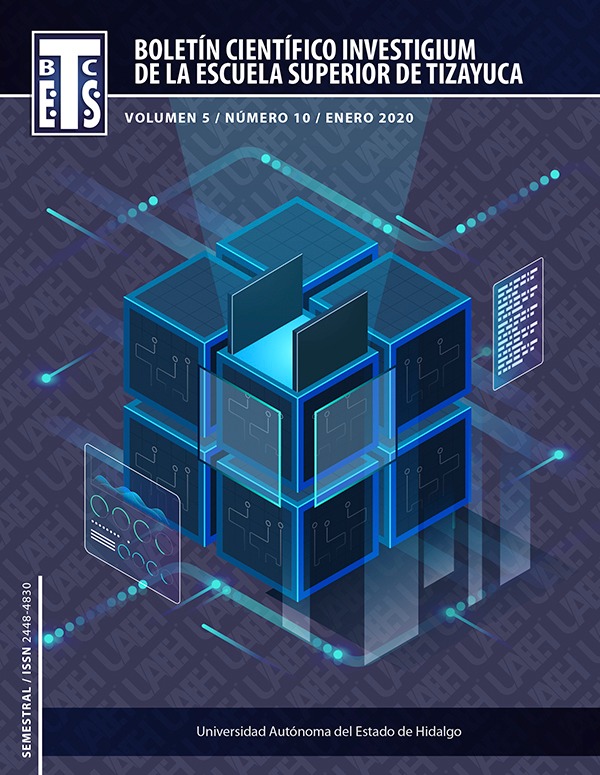Impact of the “Festival de luz y vida”. An analysis of intangible heritage in the community of Chignahuapan (2016-2019)
Abstract
Chignahuapan is one of the nine Magical Towns of the state of Puebla, which has been characterized by offering different alternatives and tourist activities, coupled with this town stands out as a community producing Christmas ornaments that has captured hundreds of visitors annually to the Feria Nacional del Árbol y la Esfera. In November the day of the dead is celebrated in Mexico, so this town has managed to preserve the story about the road to Mictlán, which is a Mexican belief about the underworld, which bears the name Festival de la Luz y de la Vida, this event has become popular since the appointment of Chignahuapan as a Magic Town since it has had a great acceptance by the national and international public, at the same time the number of visitors has increased considerably during the last years. This research aims to measure whether the Festival of Light and Life has been favorable for the host community economically, it is also important to analyze the impact on the sustainable development of this community and its relationship with the entrance to the Magic Peoples program.
Downloads
References
Organización de las Naciones Unidas, “Objetivos de desarrollo sostenible,” 2015. .
Organización de las Naciones Unidas, “La Agenda de Desarrollo Sostenible,” 2015. [Online]. Available: https://www.un.org/sustainabledevelopment/es/development-agenda/. [Accessed: 20-Sep-2019].
Organización de las Naciones Unidas, “Objetivos de Desarrollo Sostenible. Objetivo 11: Lograr que las ciudades y los asentamientos humanos sean inclusivos, seguros, resilientes y sostenibles,” 2015. [Online]. Available: https://www.un.org/sustainabledevelopment/es/cities/. [Accessed: 21-Sep-2019].
UNESCO, “¿Qué es el FIDC?,” Diversidad de las expresiones culturales, 2005. .
S. de Cultura, “Valoran importancia de los festivales artísticos en la actualidad global. Mexico Gobierno de Mexico,” 2017. .
O. P. Mallarino, L. A. Z. J, L. J. G, and G. Rey, “económico , cultural y social.”
J. Machicado, “Los festivales desde sus diferentes facetas.” [Online]. Available: https://culturayeconomia.org/blog/los-festivales-desde-sus-diferentes-facetas/. [Accessed: 13-Sep-2019].
J. Garro, “Los eventos culturales masivos como patrimonio intangible : estrategias de articulación para sitios históricos del norte” Dep. d’Urbanisme i Ord. del Territ. Univ. Politècnica Catalunya Inst. del Conourbano. Univ. Nac. Gen. Sarmiento Inst. Arte Am. Univ. Buenos Aires, 2013.
UNESCO, “La cultura para el desarrollo urbano sostenible,” 2017. .
J. Z. Szabó, “La investigación acerca de los festivales 1,” pp. 1–7, 2010.
UNESCO, “El Día de Muertos: el regreso de lo querido,” Patrimonio cultural inmaterial, 2018. .
T. Puebla, “Festival de la luz y de la vida en Chignahuapan,” 2018. [Online]. Available: http://www.todoenpuebla.com/eventos/festivaldelaluzydelavidaenchignahuapan. [Accessed: 25-Jul-2019].
B. Sahagún, Historia general de las cosas de la nueva España, Segunda Ed. Ciudad de México: Porrúa, 1956.
SECTUR, “Programa de Desarrollo Regional Turístico Sustentable y Pueblos Mágicos,” 2018.
L. Levi, “Las territorialidades del turismo: el caso de los Pueblos Mágicos en México,” vol. V, pp. 89–108, 2018.
A. Herrera, H. Cano, and L. Tlalpan, “Propuesta de Citymarketing para los Pueblos Mágicos del estado de Puebla,” Rev. Tur., vol. 1, no. 1, pp. 60–83, 2015.











